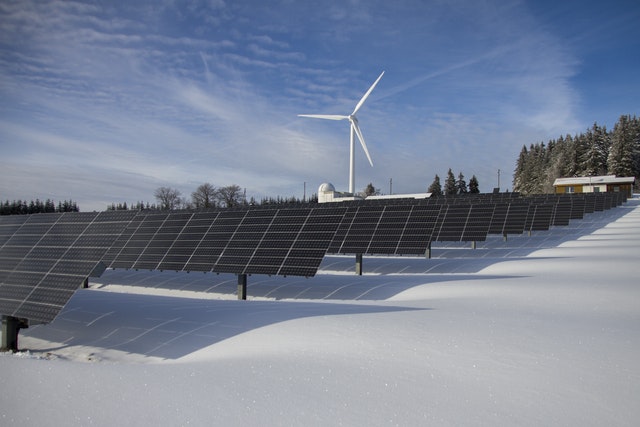Solar Energy – Direct conversions of solar radiation harness by far the largest renewable energy resource but their efficiency and capital operating costs have kept them from making a commercial breakthrough. Photovoltaics would not prevail everywhere because a facility built in a sunny location would produce better results rather than the cloudiest locations where the atmosphere interferes, and night follows day which would limit solar conversions. Overcoming solar intermittency requires either a grid large enough or building a storage sufficient to cover the demand of peak generation times. Loss of location flexibility for electricity generating plants converting direct or indirect solar flows and inevitable land use conflicts with food production would also be drawbacks for the production of solar energy.
Wind Energy – Windmills have a long history as providers of locally important mechanical energy. The eventual impact of wind generated energy is that the resource is highly variable. Peak wind flows only rarely coincide with the time of highest demand. Maximum wind driven generation and peak electricity demand are commonly mismatched where the former takes place often during the midday when demand is low, the latter peaks in late afternoon and evening when winds die down. Large scale wind projects could be immediately helpful only in places where there are already major high-capacity interconnections capable of transmitting power from the load stations. The most often listed negatives by environmentalists and by people living in the proximity of wind machines are bird strike, noise, interference with electromagnetic waves and the esthetic aspect of large wind turbines. However technical advances can change the prospect such as better turbine design and appropriate exclusion zones
Hydro Energy – Hydroelectricity is the most important commercial source of non-fossil energy. Voluminous water reservoirs have been the only practical means of storing large quantities of almost instantly deployable energy. Competing uses of river flows, unsuitability of many environments to site hydro stations, seasonal fluctuations of flow and impossibility to convert waters kinetic energy with perfect efficiency at full capacity combines to form hydro energy’s limits. At the same time several widely publicized cases of mass population displacement caused by hydro projects, huge cost overruns and questionable economic performances are listed under the many undesirable impacts of large dams and reservoirs (World Commission on Dams 2000). New studies keep uncovering the extent of many lasting environmental impacts which includes massive reduction in aquatic biodiversity and excessive silting.
Nuclear Energy – No other mode of primary electricity generation was commercialized as rapidly as the first generation of fission reactors, but no other mode of electricity production has fallen so far short of its initial expectations. Reactors under construction will not bring any large net additions of generating capacity (only about 12% more than the 2001 total). Future challenges faced by nuclear power relate to the economics of nuclear energy generation which have always been in dispute, given the many externalities that have not been properly accounted for. They range from long term health effects to operating costs and security concerns, nuclear weapons proliferation issues and proper containment design (older reactor plants were not designed to hold the lifetime output of the reactor waste) for final waste management, which are reflected in a mixed public acceptance. These are crucial areas to be addressed and developed in the long term if nuclear power should expand its share in electricity generation in the future and contribute a major part to global energy supply. The only certain conclusion is that the nuclear era cold be fueled by deploying various breeder designs or by exploiting thorium, whose resources are much more plentiful and more accessible than uranium.



Leave a Reply